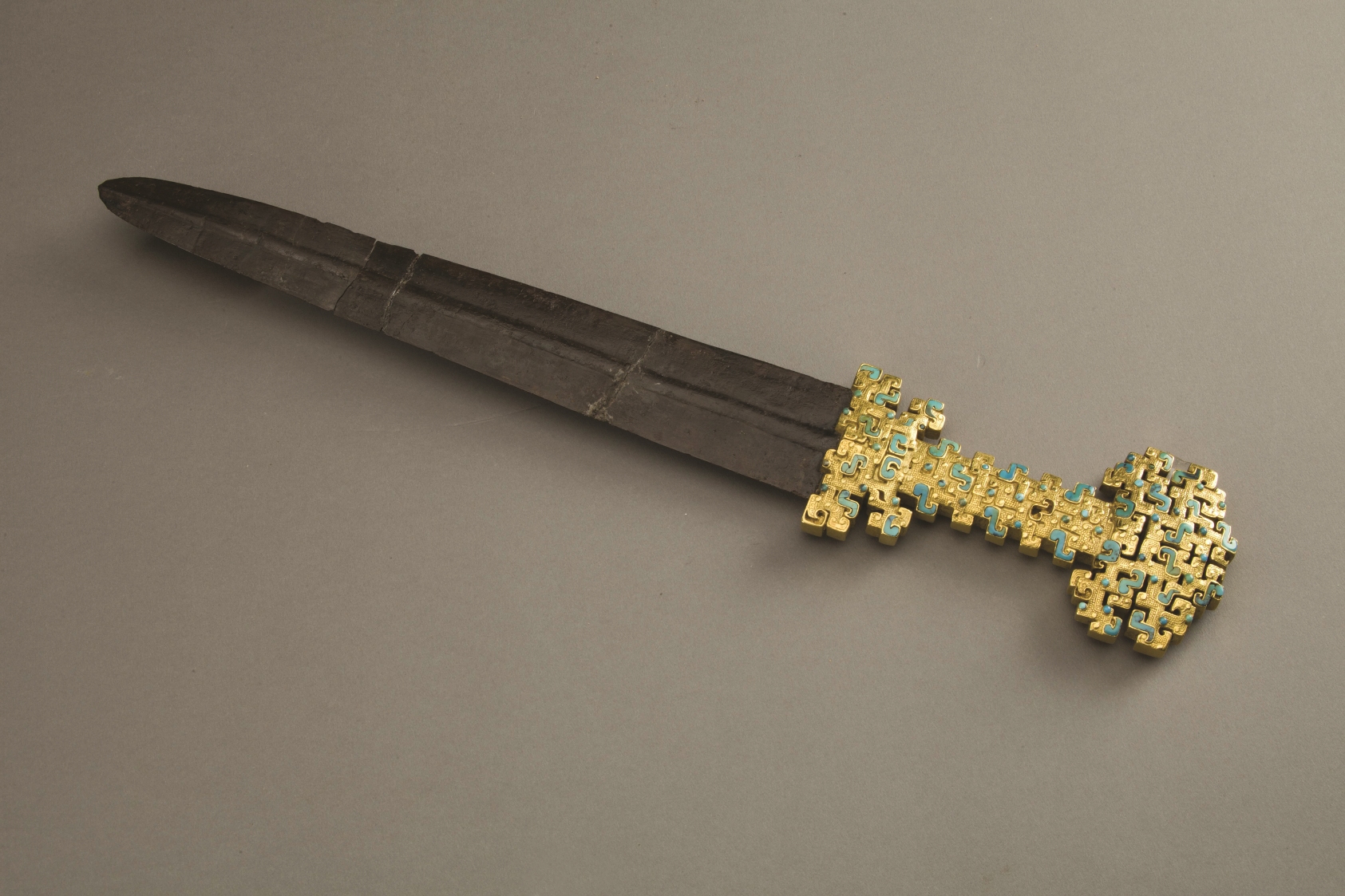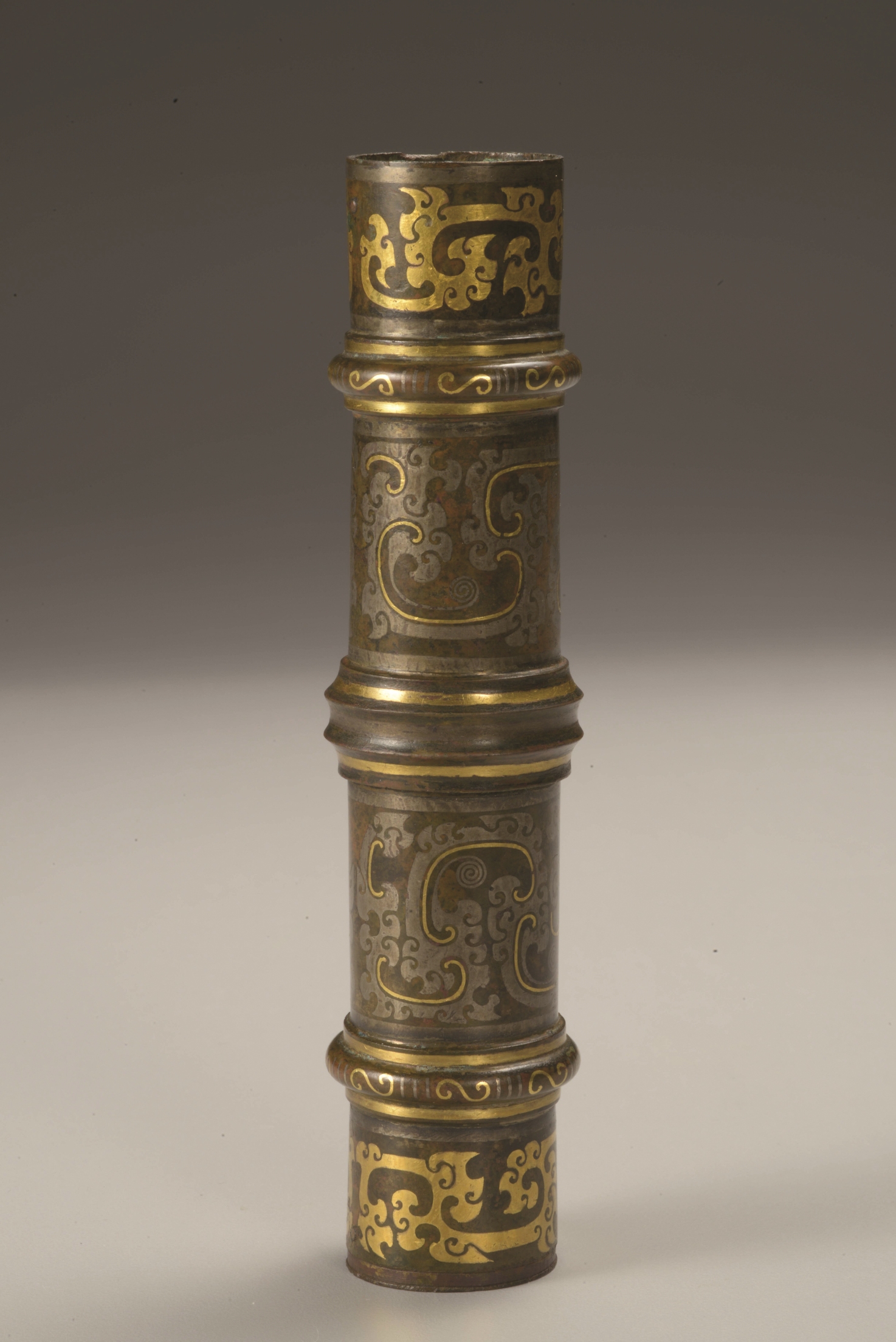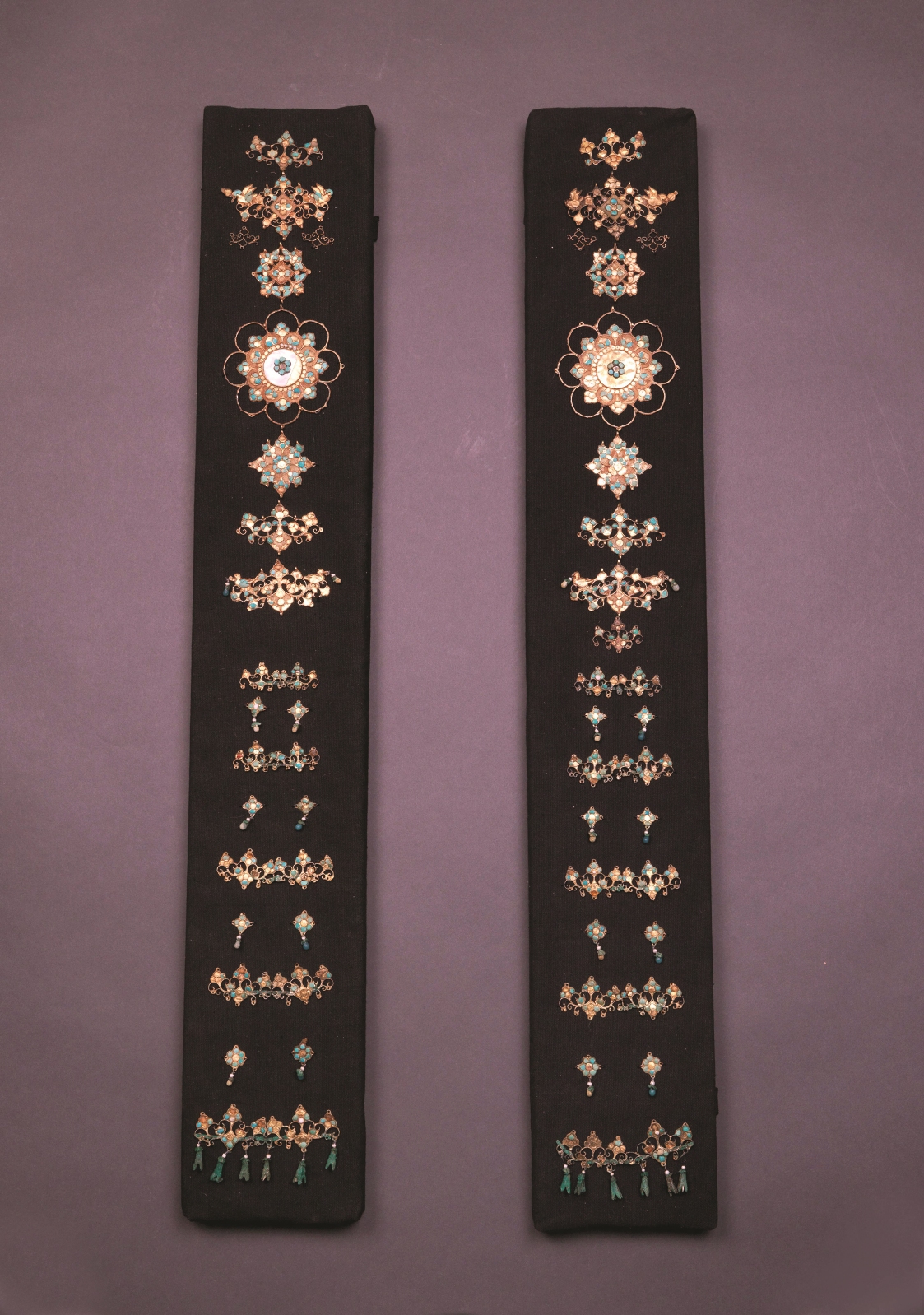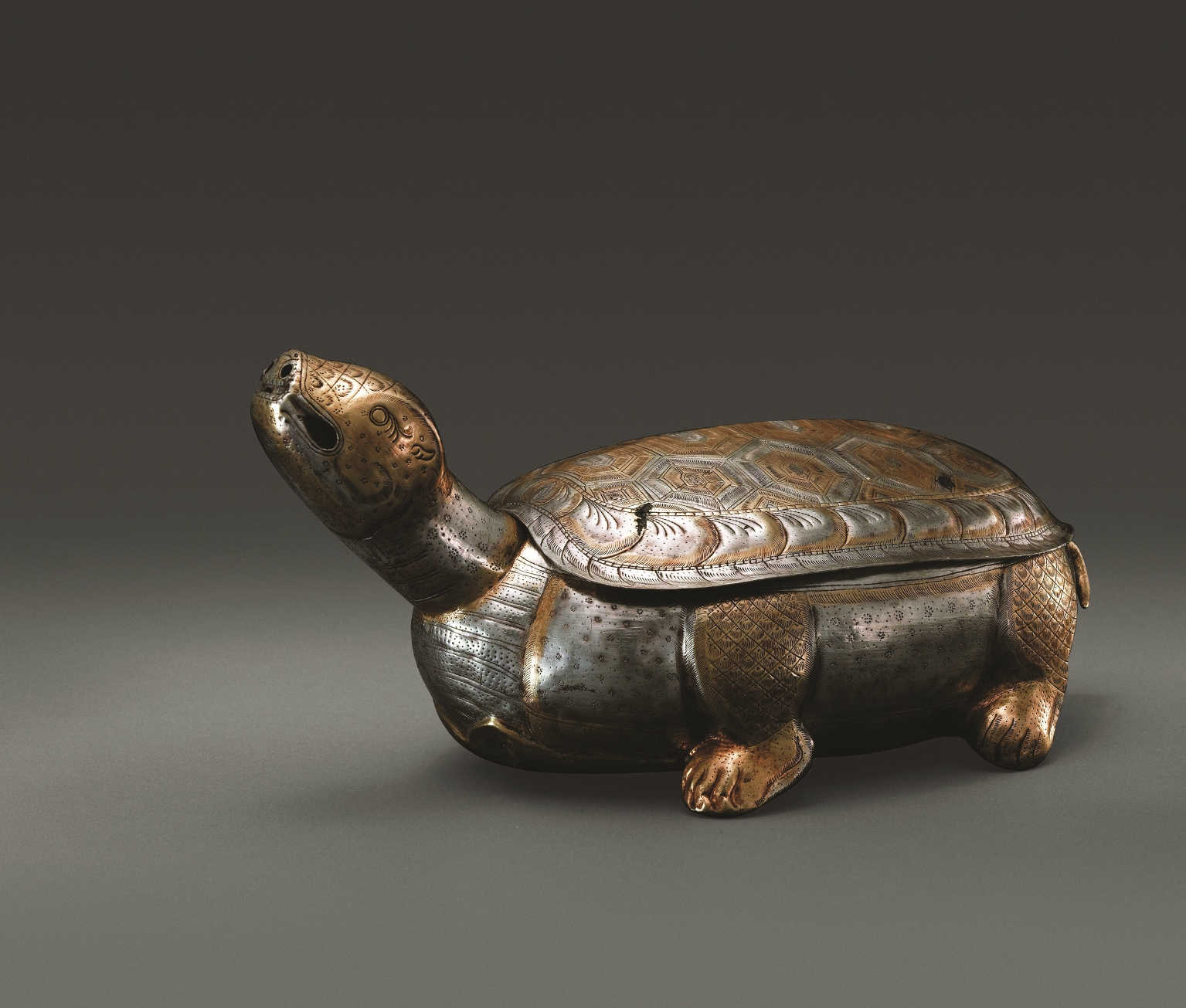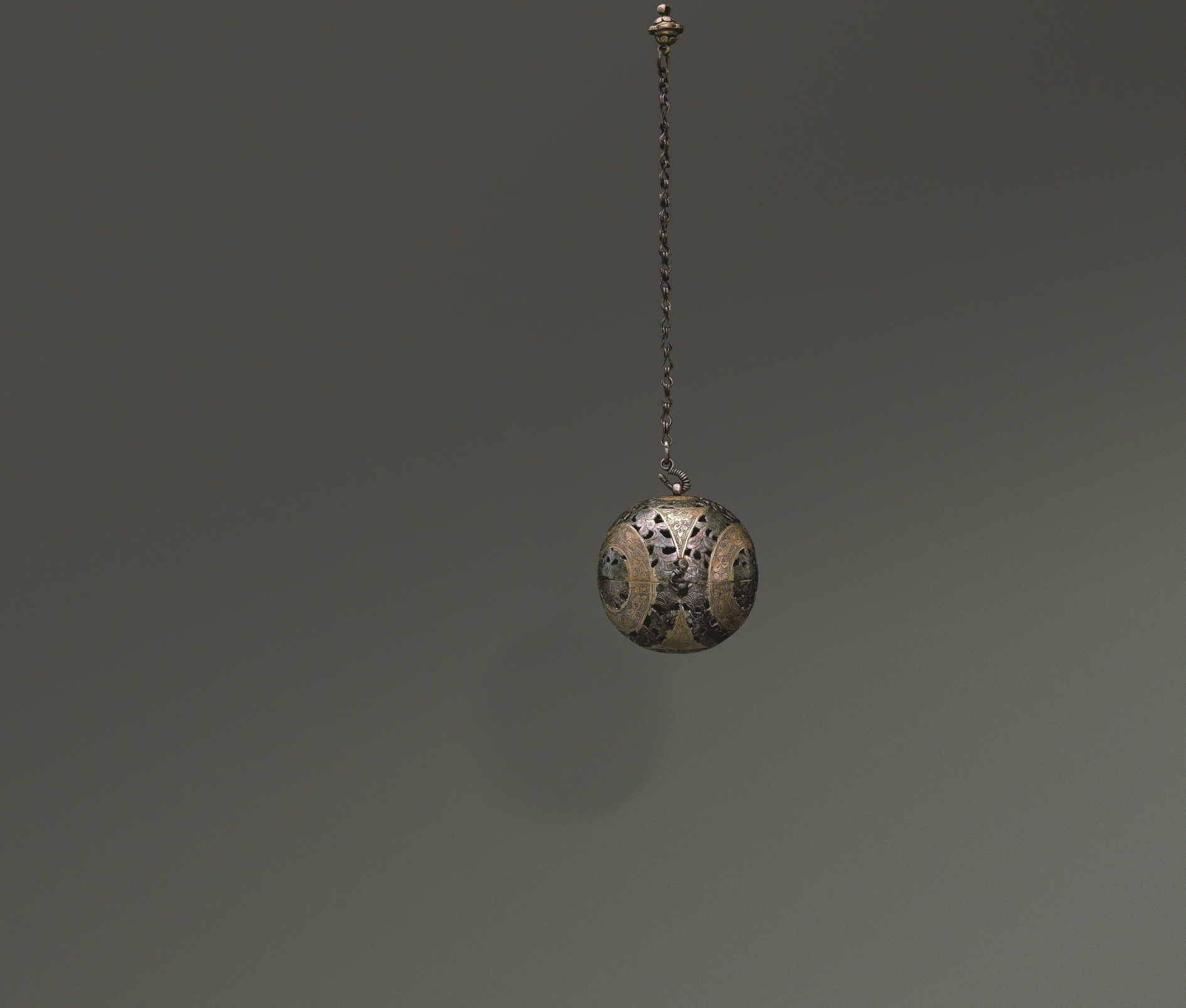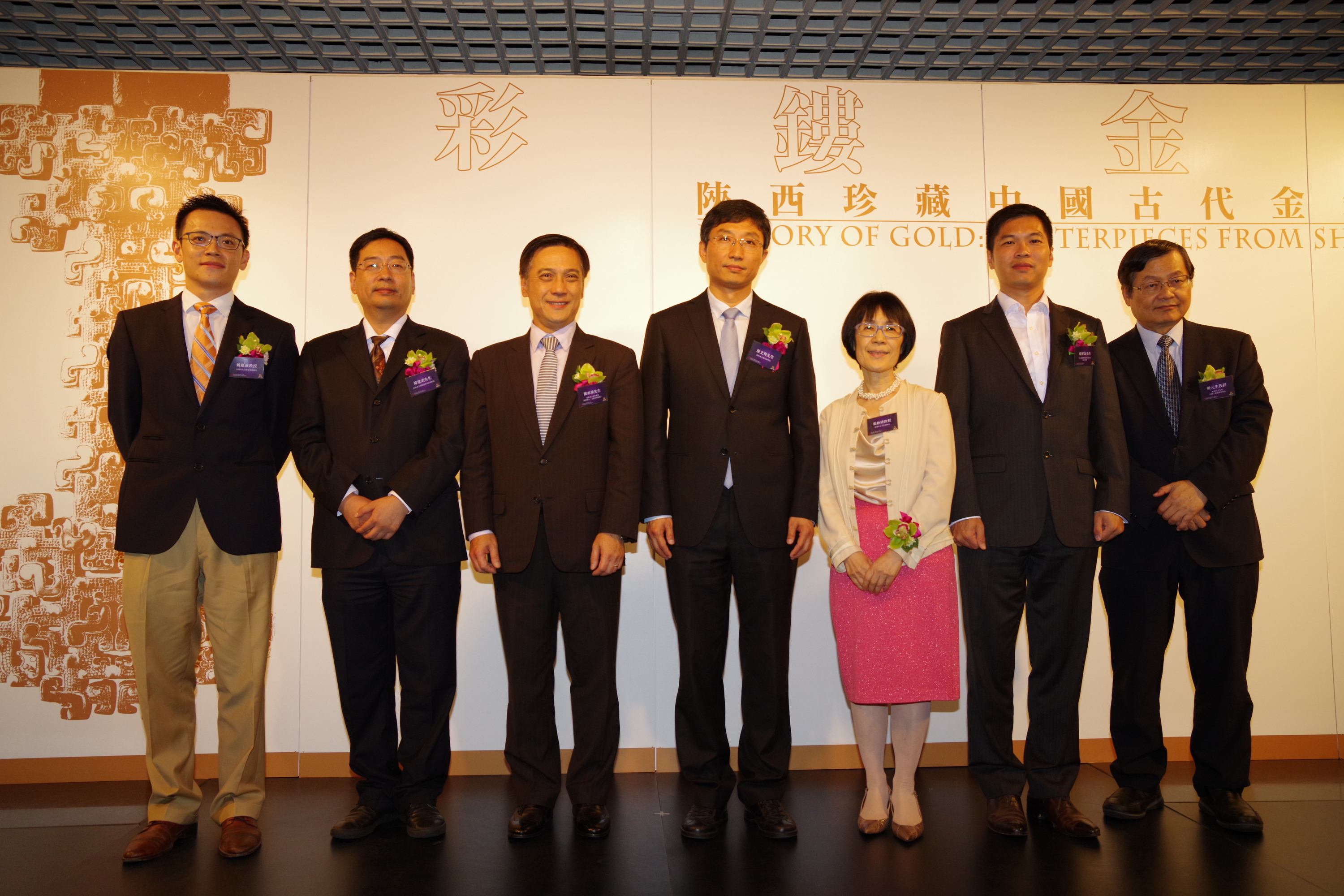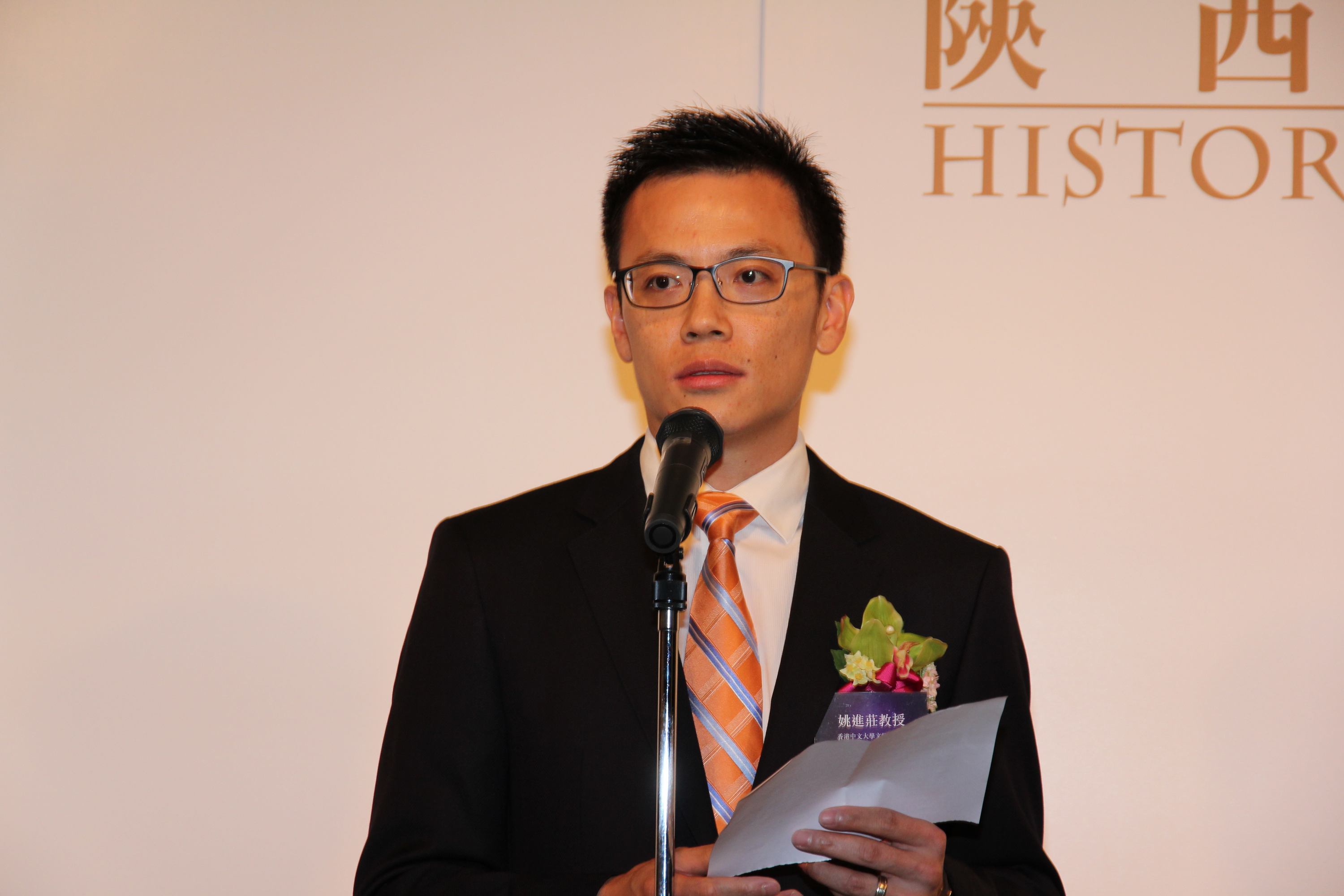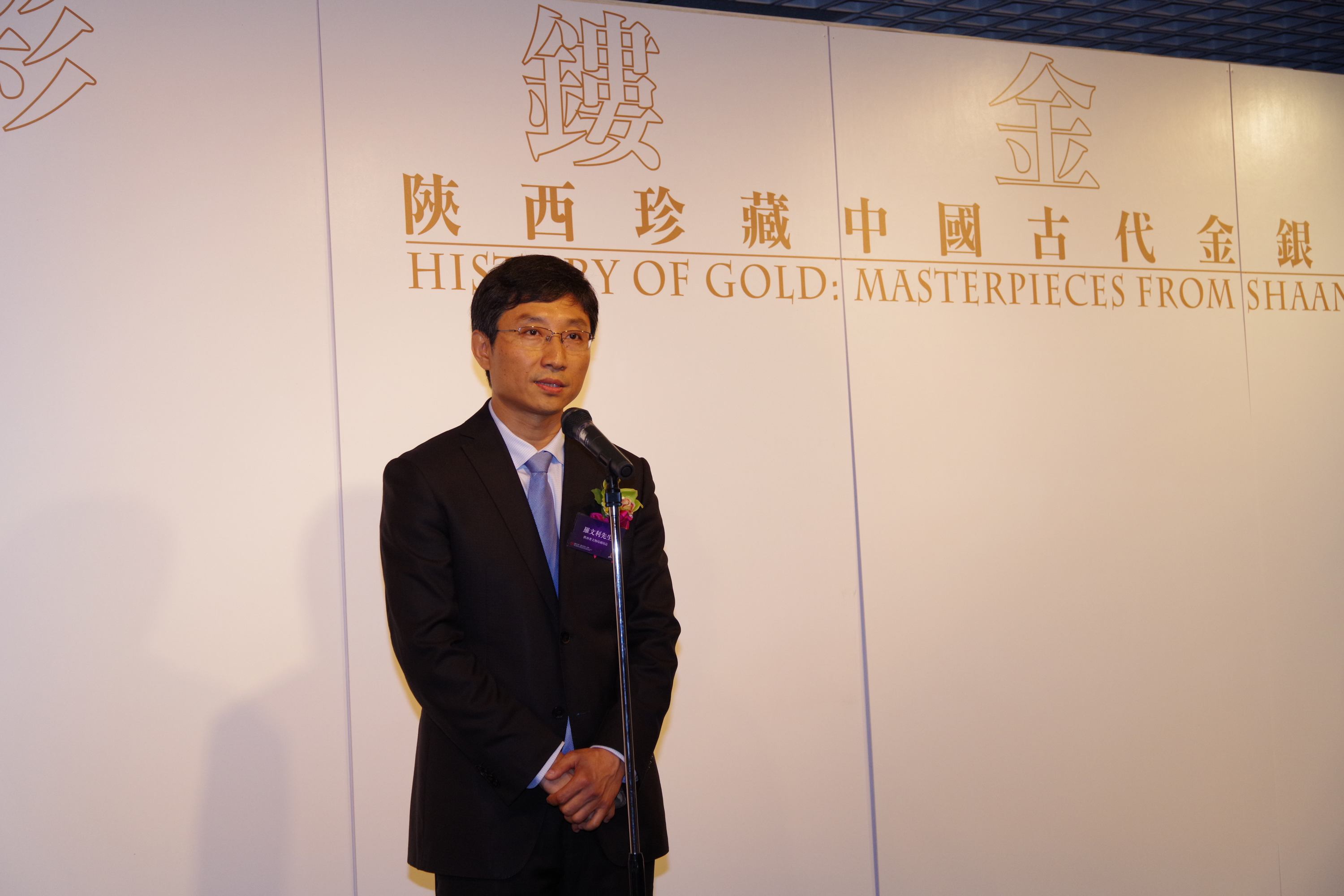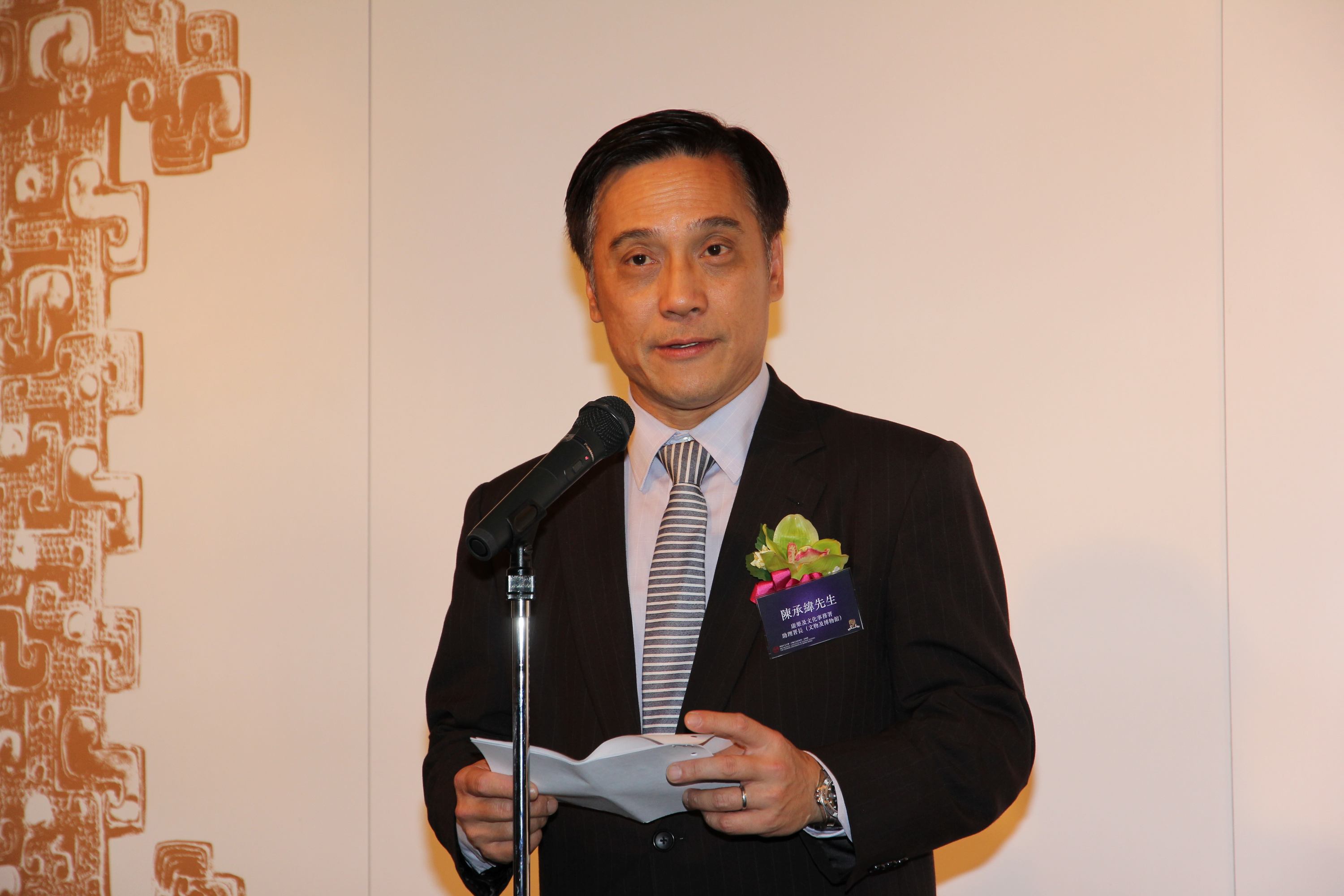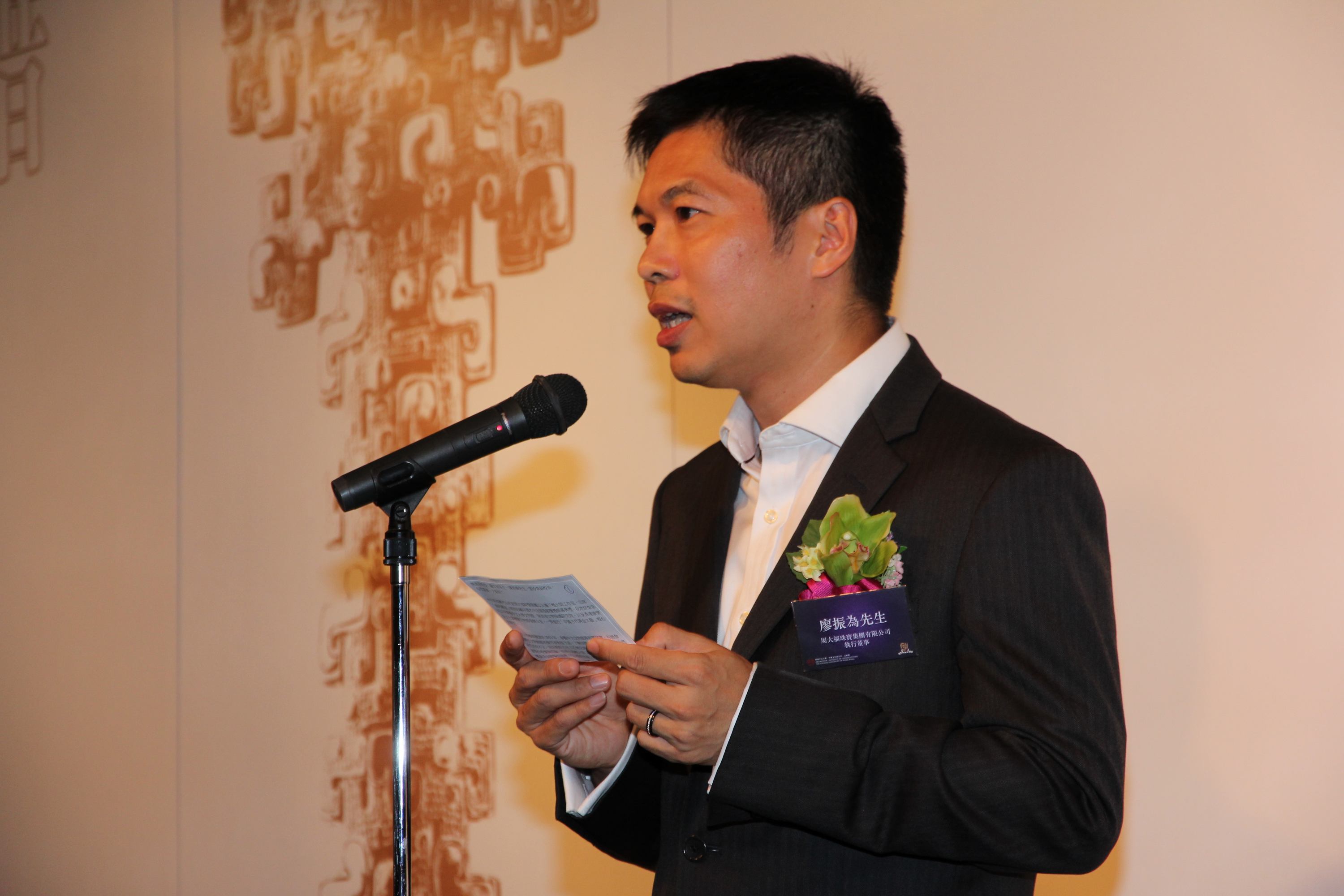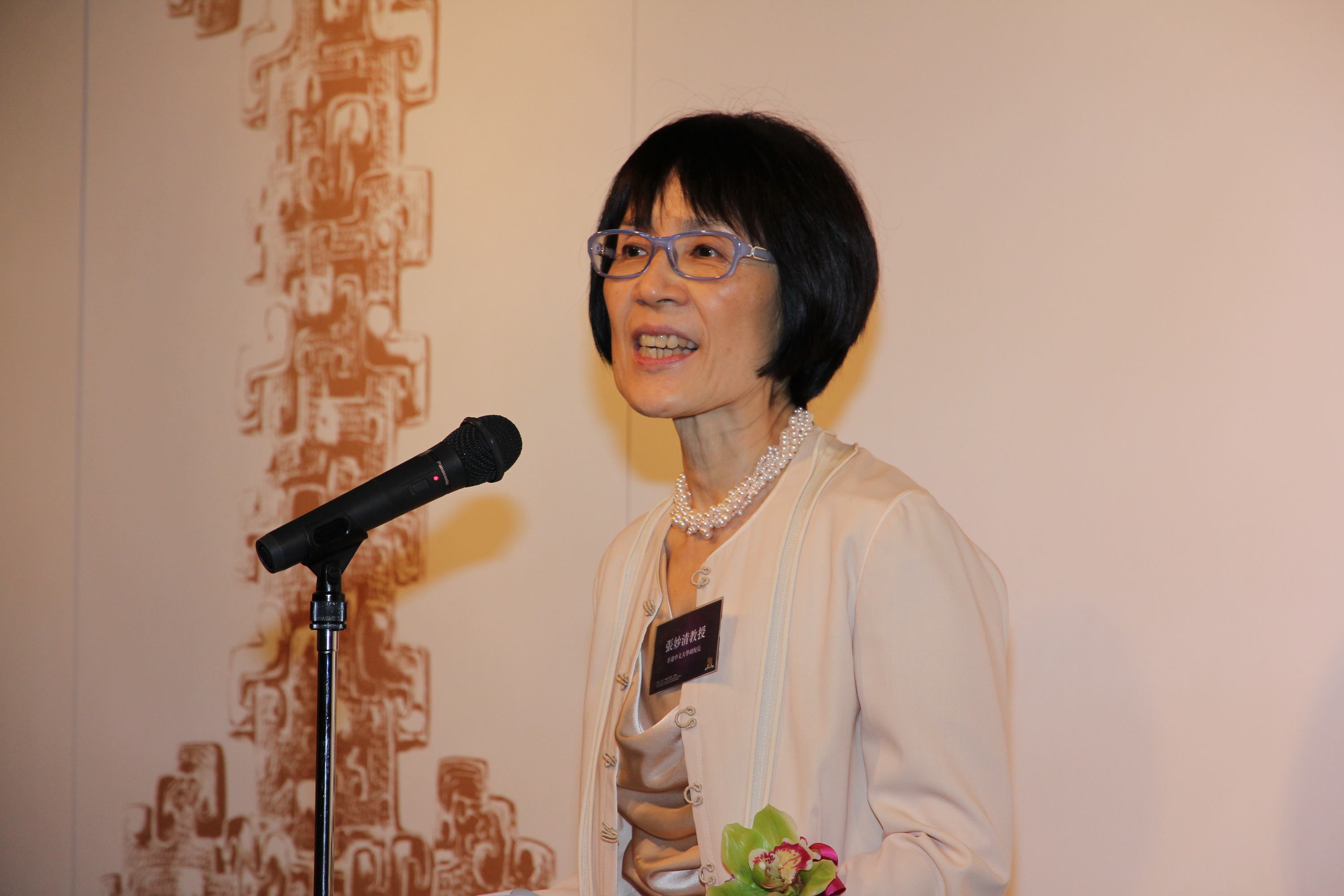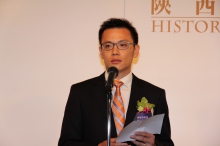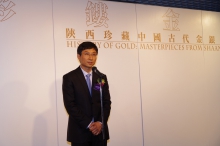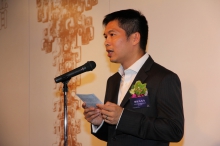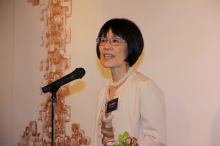News Centre
CUHK Art Museum Exhibits Gold and Silver from Shaanxi
Shaanxi is internationally famous for its massive and important findings of gold and silver. History of Gold: Masterpieces from Shaanxi is co-presented by the Shaanxi Provincial Cultural Relics Bureau, the Shaanxi History Museum (Shaanxi Cultural Heritage Promotion Center), and the Art Museum of The Chinese University of Hong Kong (CUHK) from tomorrow (24 June) to 24 September 2017. The exhibition features 60 pieces (sets) of carefully-selected ancient Chinese gold and silver works from 22 institutions of Shaanxi province, dating from 1000BC to 19th century. Members of the public are welcome to visit the exhibition. Admission is free.
The opening ceremony of the exhibition was held today (23 June). Those present included Mr. Luo Wenli, Deputy Director of the Shaanxi Provincial Cultural Relics Bureau; Prof. Fanny M.C. Cheung, Pro-Vice-Chancellor and Vice-President of CUHK; Mr. Han Jianwu, Associate Dean of the Shaanxi Institute for Preservation of Cultural Heritage; Mr.Bobby Liu, Executive Director of Chow Tai Fook Jewellery Co. Ltd; Mr. Chan Shing-wai, Assistant Director of Leisure and Cultural Services (Heritage and Museums); Prof. Leung Yuen-sang, Director of the Institute of Chinese Studies, CUHK and Prof. Josh Yiu, Director of the Art Museum, CUHK.
Ancient Chinese goldsmithing is not a well-known art field, compared to bronze, jade, and ceramic, probably due to two factors. One is the lack of record in historic literature, and the other is inaccuracies and misleading information from goldsmiths themselves. The research project ‘Ancient Chinese Gold Techniques’ is a collaborative effort of the Art Museum of CUHK, the Shaanxi Institute for Preservation of Cultural Heritage, the Conservation Office of the Leisure and Cultural Services Department of Hong Kong, and the Master Studio of Chow Tai Fook starting from 2014, for the first time using interdisciplinary research methods to reconstruct several major ancient goldsmith techniques and the history of their development.
Based on these astonishing exhibits, a number of interactive programmes will be organized, such as guided tours, parent-child workshops and a series of public lectures that aim to provide the audience with different museum experiences and a deeper understanding of the exhibition subject. A specially designed exhibition brochure will be freely distributed.
Both the exhibition and the entire research project are fully sponsored by Chow Tai Fook Jewellery Co. Ltd.
Details of the exhibition are as follows:
| Exhibition Period: | 24 June to 24 September 2017 |
| Exhibition Venue: | Art Museum, Institute of Chinese Studies, CUHK |
| Opening Hours: |
Mondays to Wednesdays, Fridays and Saturdays: 10:00am-5:00pm |
| Closed: | Thursdays (Except Public Holidays) |
| Enquiries: | 3943-7416 |
Attachment: Highlighted exhibits
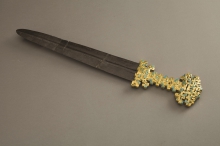
Iron Sword with Gold Hilt Decorated with Panhui Patterns and Turquoises Late Spring-and-Autumn period, 600-500 BC Total length 35.2 cm, length of the handle 12.8 cm Unearthed from tomb no. 2 in Yimen village, Baoji in 1992 Short swords (or daggers) with straight blades convenient for close combat were popular in northwest China, yet the snakelike patterns known as panhui on the hilt of this object are a design of the Central Plain, and therefore it is a product of the exchanges between the two cultures. The hilt was probably cast with two pieces of a mold made from the same original model, as patterns on both sides of the hilt are identical. Both the sword’s pommel and hand guard are symmetrical, and the panhui patterns and beaded patterns are repetitive, reflecting the unit-based characteristic of patterns on Eastern Zhou cast objects. There are traces of shrinking caused during casting in the areas where the turquoises have come off, suggesting a large amount of polishing of the surface after casting.
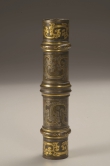
Gold and Silver Inlaid Coupling Qin dynasty, 221–206 BC Length 13.95 cm, diameter 2.6–2.7 cm Unearthed from the pit of bronze chariots and horses of the Mausoleum of the First Qin Emperor in Lingtong district, Xi’an in 1980 From the Western Zhou period onward, a canopy was added over a chariot. For different rituals and occasions, the canopy had to be taken off, and was therefore not fixed to the chariot. The pole used to support the canopy was often made of several sections, connected with bronze couplings. Some believe this approach made it easier to dismantle the canopy. From the Warring States period to the Han dynasty, the coupling was given great attention and usually decorated with an intricate design.
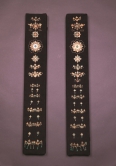
Gold Dress Accessories with Precious Stone Inlays Tang dynasty, 618–907 Various dimensions, height 77 cm Unearthed from the tomb of Li Chui in the southern suburb of Xi’an in 2002 The owner of these dress accessories, Li Chui (712–736), is the great-great-granddaughter of Li Yuan, founder of the Tang dynasty. She died of illness at the age of twenty-five. The carved picture might illustrate how these accessories were worn. Descriptions of gorgeous dresses embellished with precious stones can be found in Tang literature. For example, Li He’s poem Eryue 二月 (February) has a couplet describing the style: “High buns adorned with gold hairpins are like piles of clouds at dusk, pearl dresses make the sound of the wind with the dance”, or in Yuan Zhen’s Mengyou chun 夢游春 (Spring Outing in a Dream) as a “soft-hemmed gold-encrusted jewelry dress”. These objects exemplify the highest achievement of jewelry-making techniques in the Tang dynasty. Precious stones inlaid on the frames made with gold strips (the so-called Jinkuang Baodian in Chinese) often come up with granulation, as mentioned in Wen Tingyun’s Guiguo yao歸國謠 (Ballad of Returning to China), where “Inlays shine the gold grains, and vice versa.” There are spiral patterns on some thin wires, suggesting they were made with the twisting technique. Gold granules are more than just decorations. They are often piled around the edges of openwork design, probably helping to fasten the design.

Gilt Silver Case in the Shape of a Tortoise Tang dynasty, 618–907 Height 13 cm, length 28.3 cm, width 15 cm, weight 820.5 g Unearthed from the back chamber of the underground palace of Famensi pagoda in Fufeng county in 1987 This object is an offering made by Emperor Xizong and is simply referred to as the “tortoise” in Yiwuzhang(the inventory). Some believe it is a container for tea powders. However, the hole at the mouth of the tortoise suggests it is probably an incense burner. The image of smoke coming out of the mouth of a tortoise is found on a incense burner also unearthed from Famensi. In 1990, a tortoise case was found among the Tang-dynasty silver hoard in Fanzhi county, Shanxi province, which probably has a similar function. The body of the tortoise is hammered and connected to the head and tail by welding.
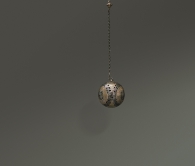
Gilt Silver Sachet with Flower and Bird Patterns Tang dynasty, 618–907 Length of the chain 17.7 cm, diameter of the mouth 5.8 cm, weight 92.2 g Unearthed from the back chamber of the underground palace of Famensi pagoda in Fufeng county in 1987 This is an offering made by Emperor Xizong and referred to as a “sachet” in Yiwuzhang(the inventory). There is a system of Cardan’s suspension set up in the sachet, keeping the perfume holder constantly horizontal and preventing the powder from spilling when the sachet moves with the wearer. The chain is made of open-ended rings linked together. This kind of sachet was first documented in Xijing zaji 西京雜記 (Miscellaneous Records of the Western Capital), written between the Han and Jin dynasty. Later, a type of perfume ball used in the court is mentioned in Songshi, Jinshi, and Yuanshi, which is likely something similar to this sachet. These are still mentioned during the Ming dynasty, such as in Tian Yiheng’s Liuqing rizha 留青日札 (Liuqing’s Daily Jottings). Existing objects are mostly archaeological findings dated to the Tang dynasty.
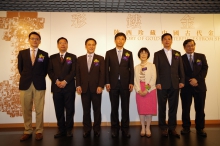
A group photo of officiating guests, (from left) Prof. Josh Yiu, Director of the Art Museum, CUHK; Mr. Han Jianwu, Associate Dean of the Shaanxi Institute for Preservation of Cultural Heritage; Mr. Chan Shing-wai, Assistant Director of Leisure and Cultural Services (Heritage and Museums); Mr. Luo Wenli, Deputy Director of the Shaanxi Provincial Cultural Relics Bureau; Prof. Fanny M.C. Cheung, Pro-Vice-Chancellor and Vice-President of CUHK; Mr. Bobby Liu, Executive Director of Chow Tai Fook Jewellery Co. Ltd; Prof. Leung Yuen-sang, Director of the Institute of Chinese Studies, CUHK.
